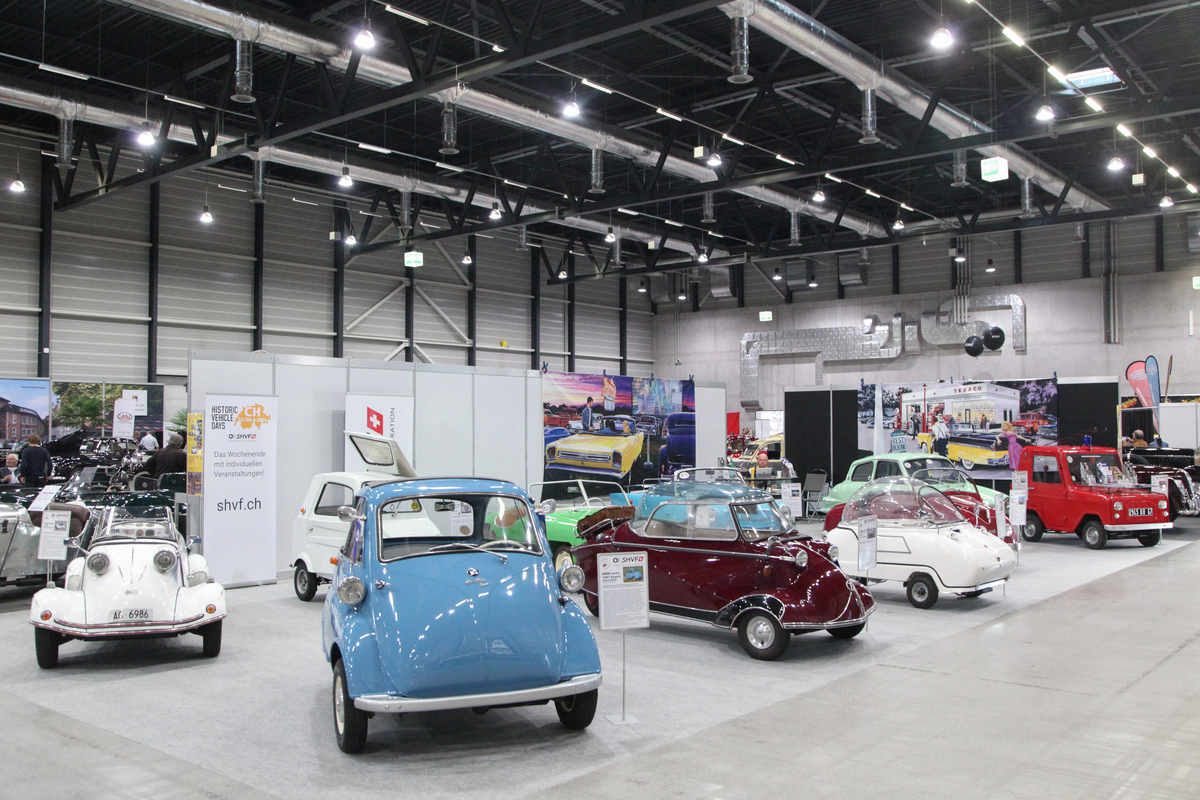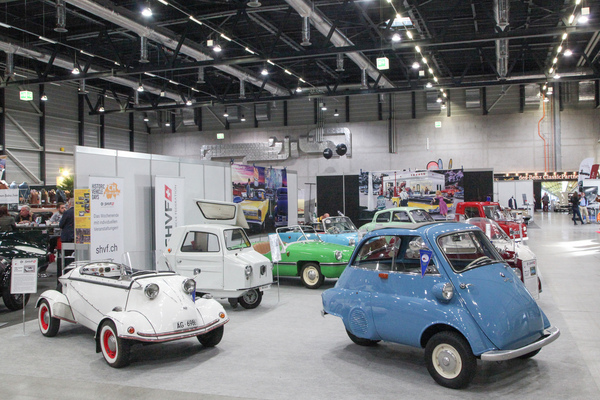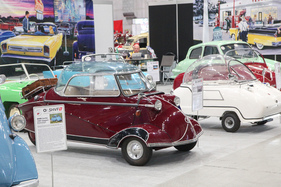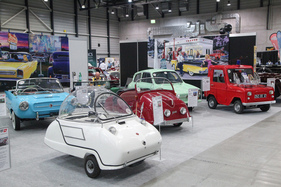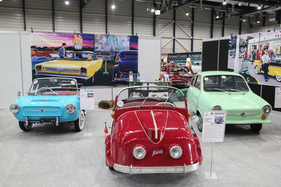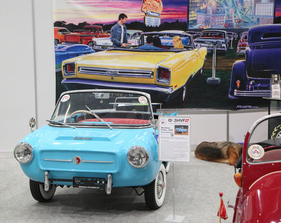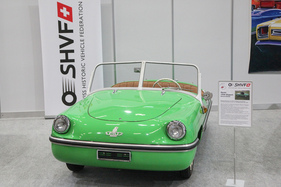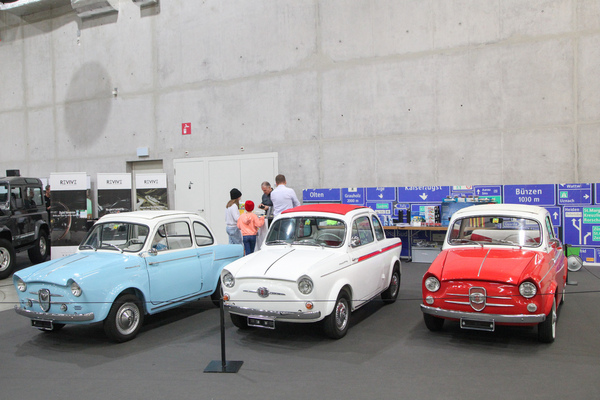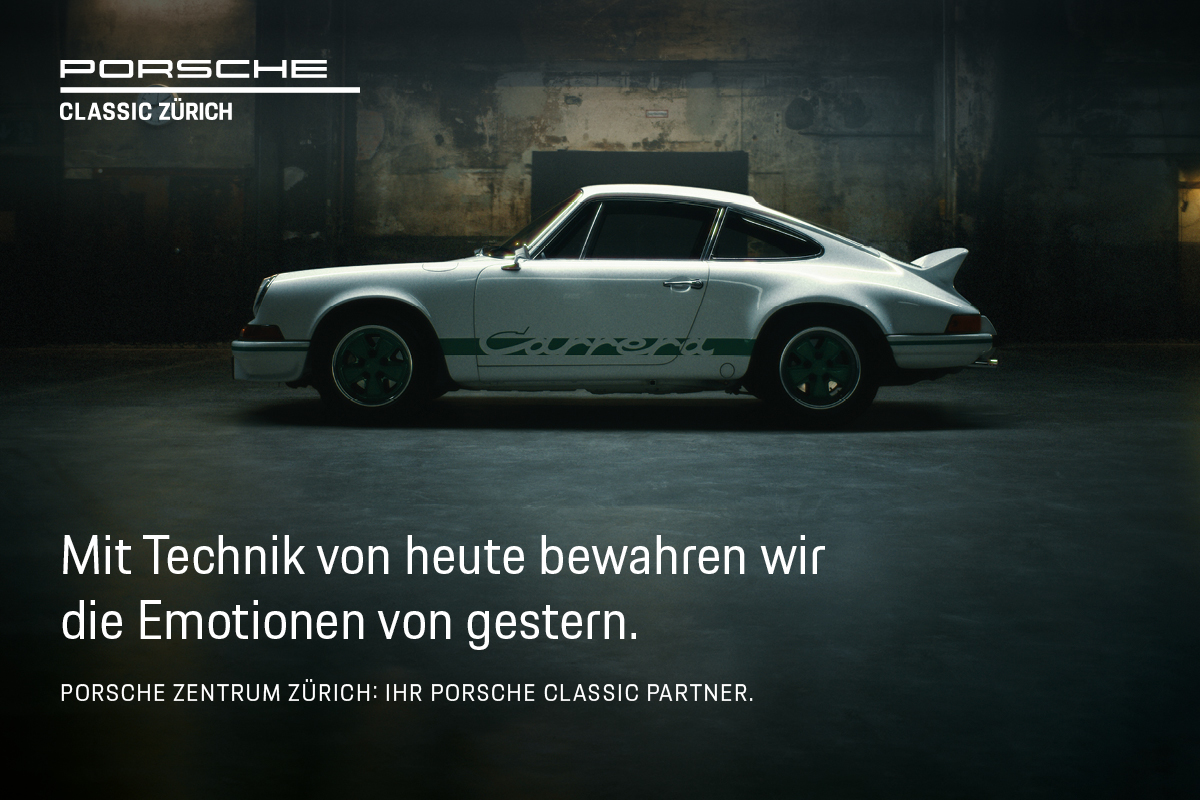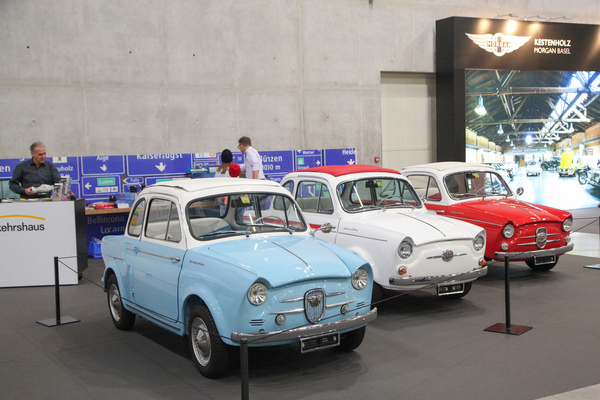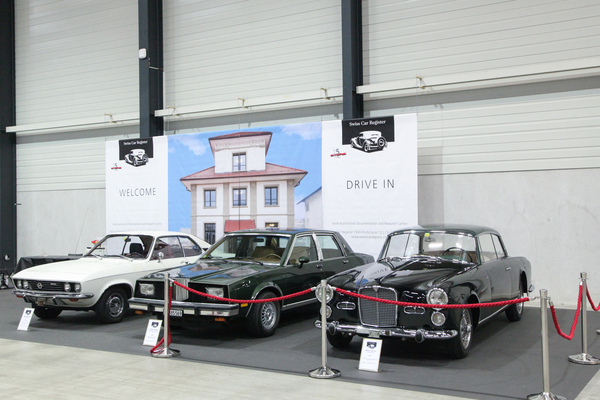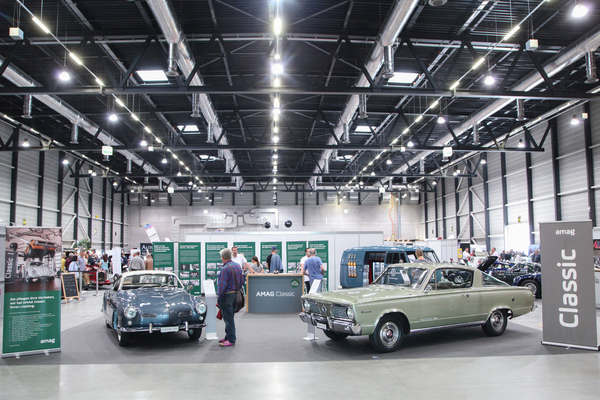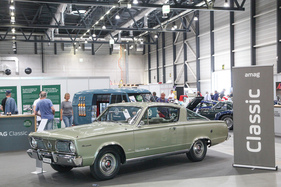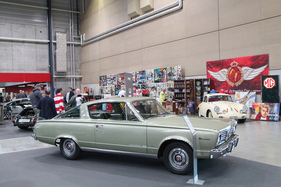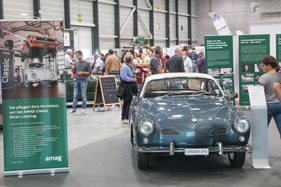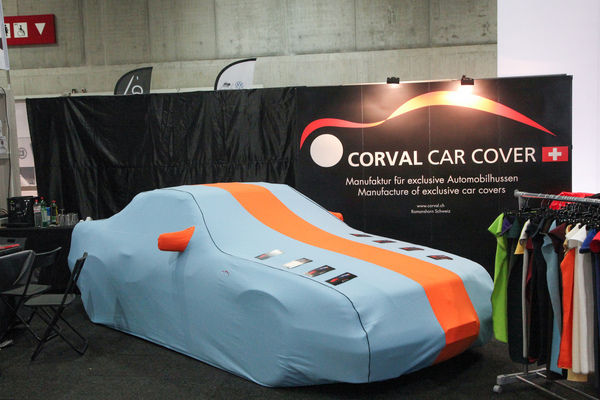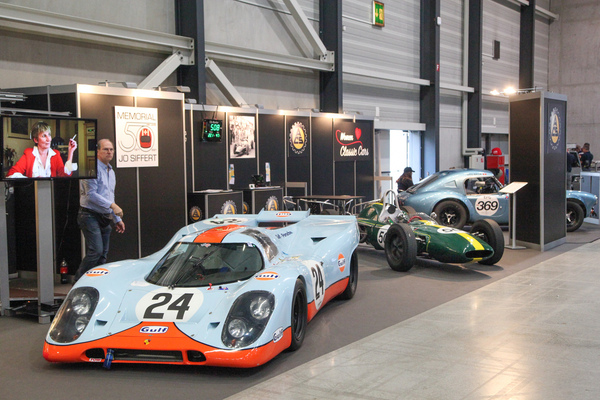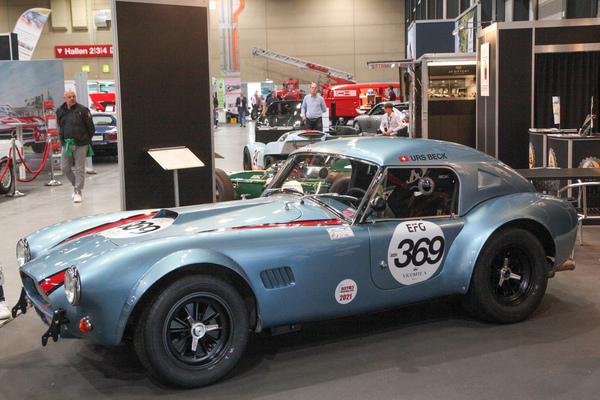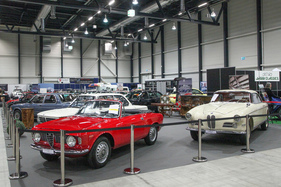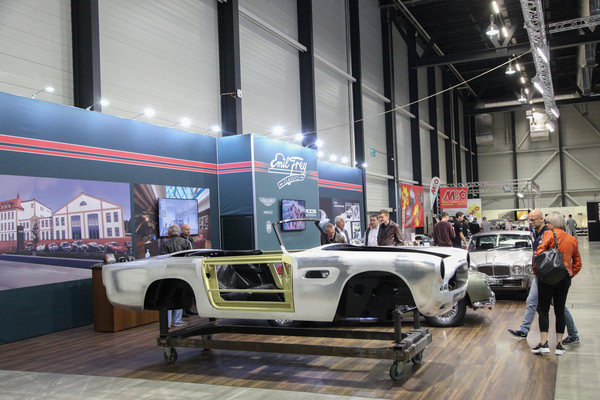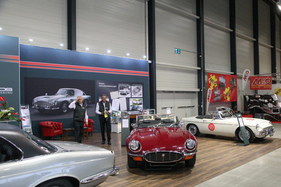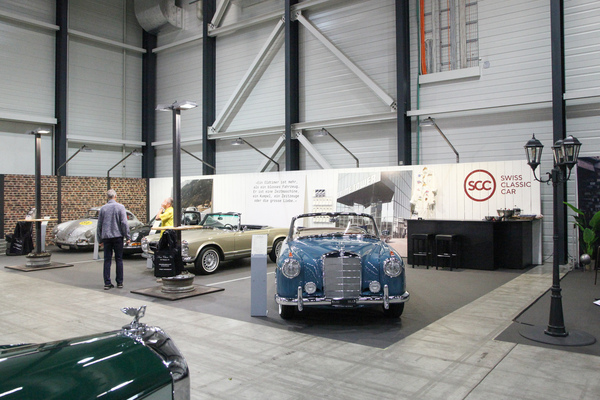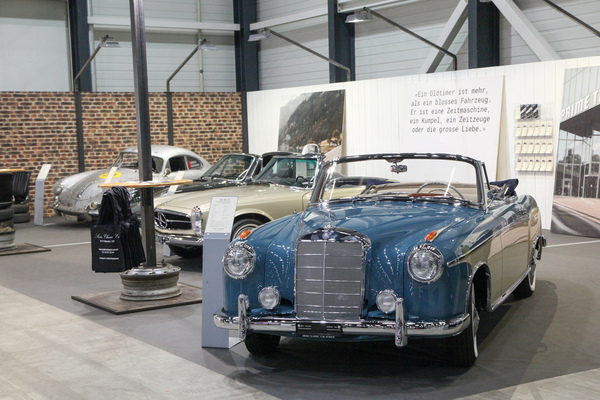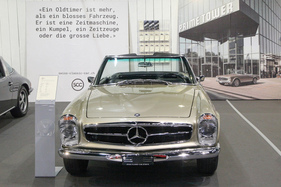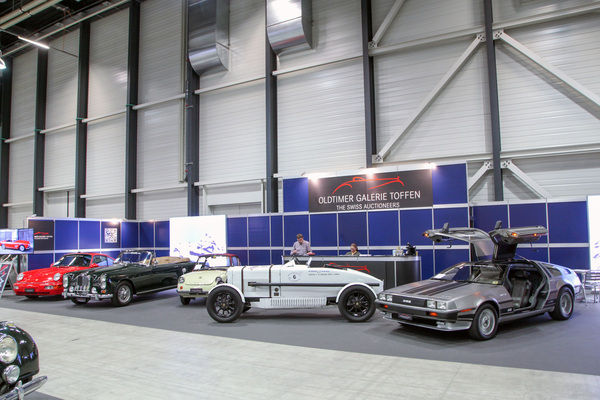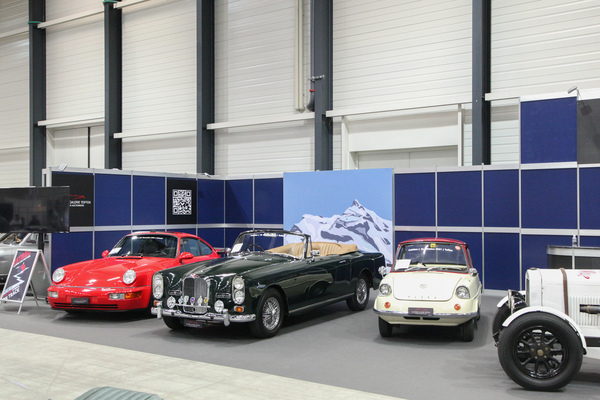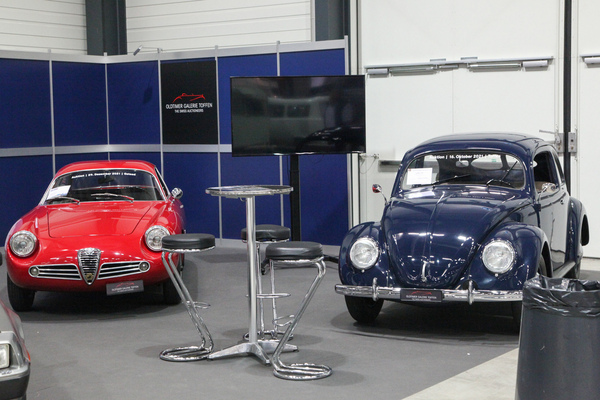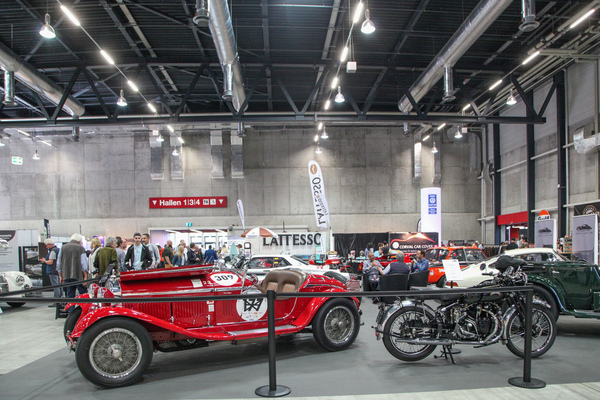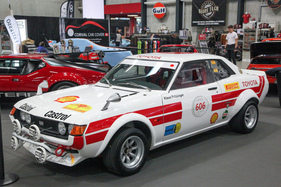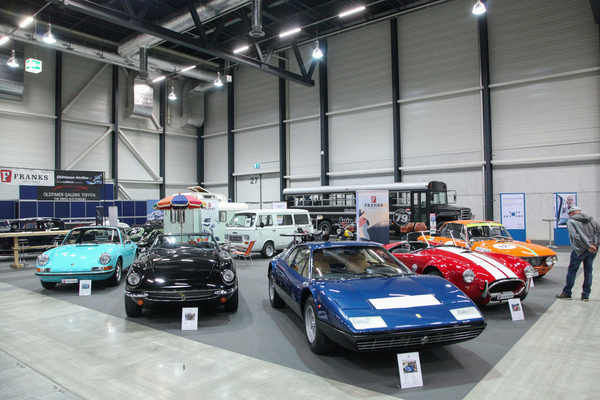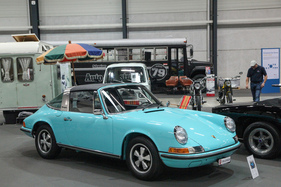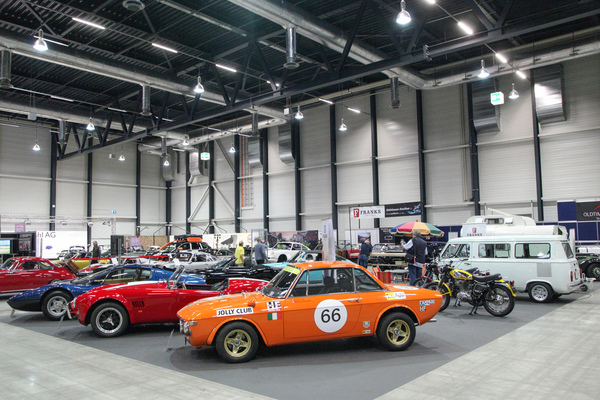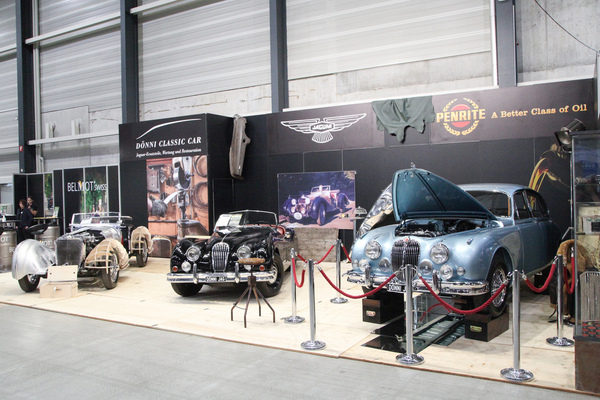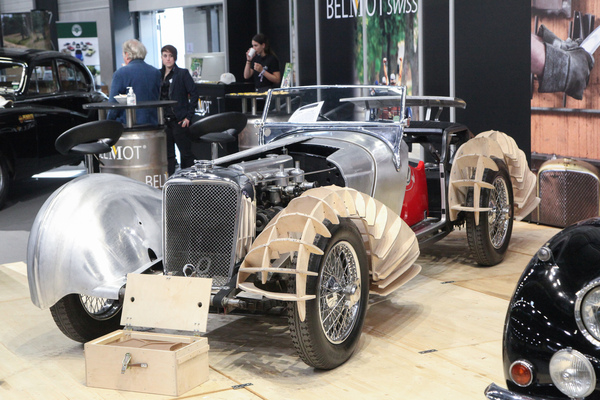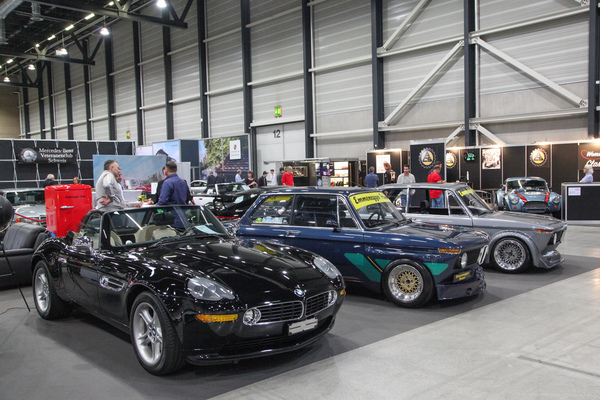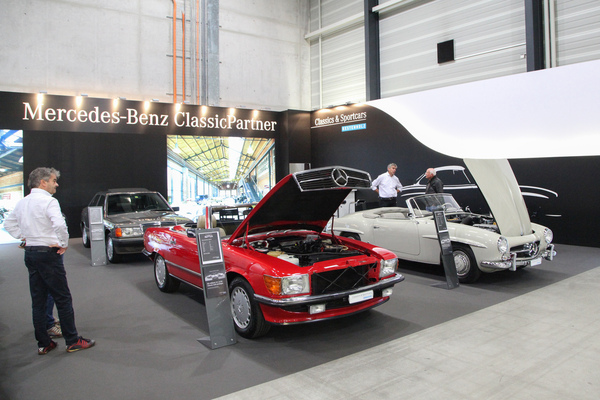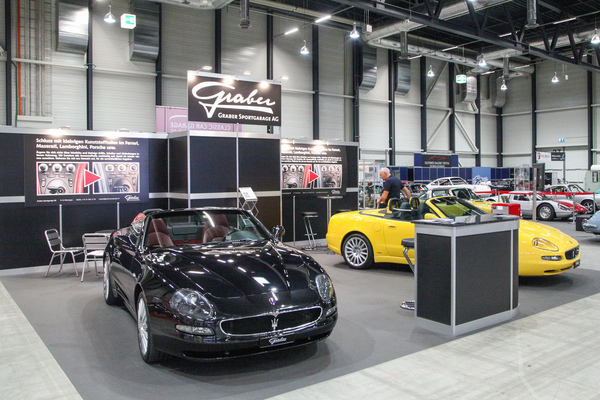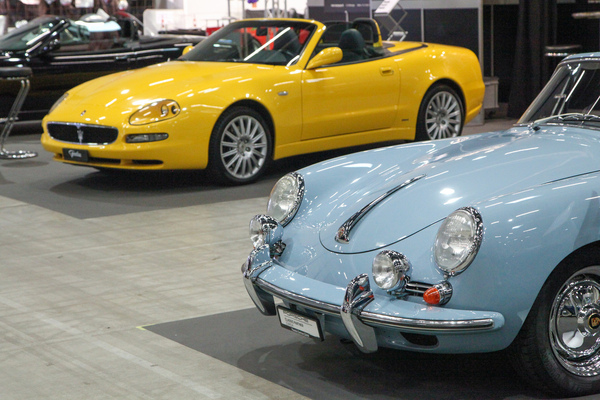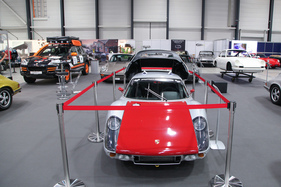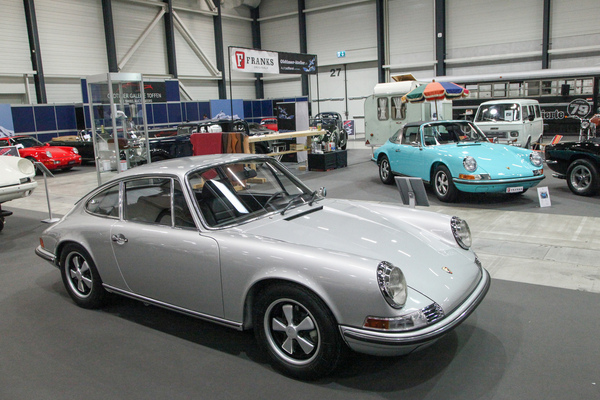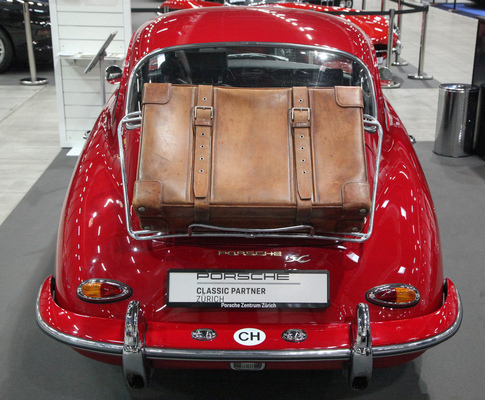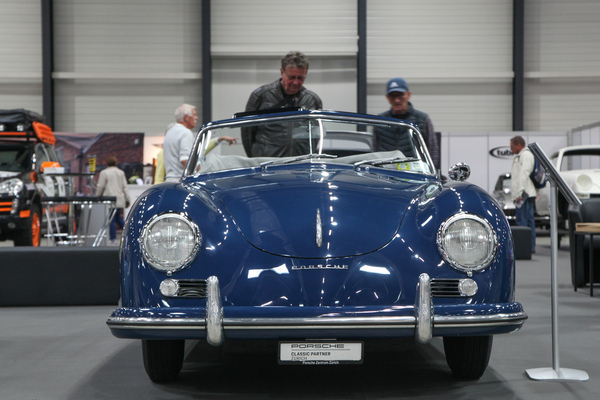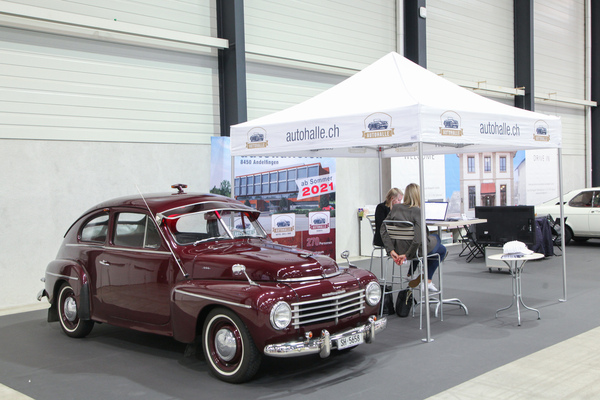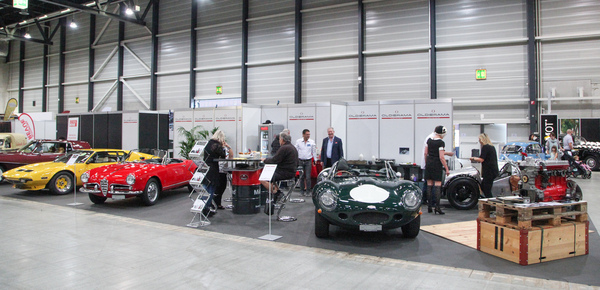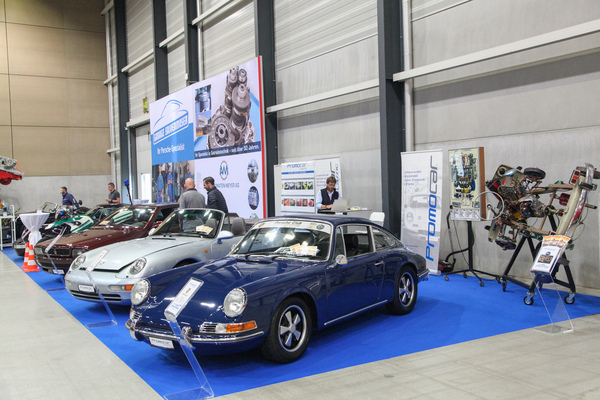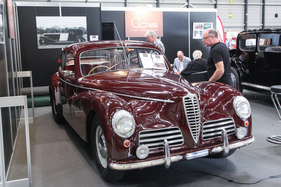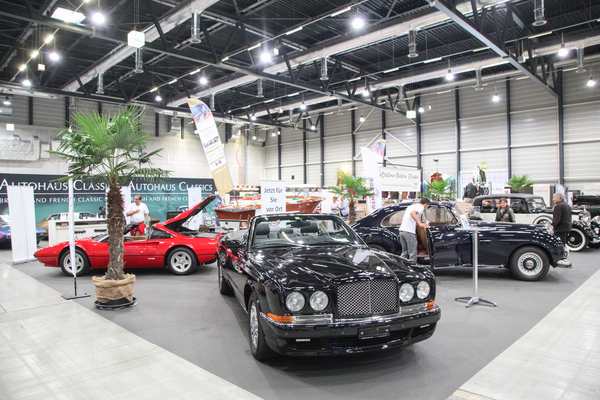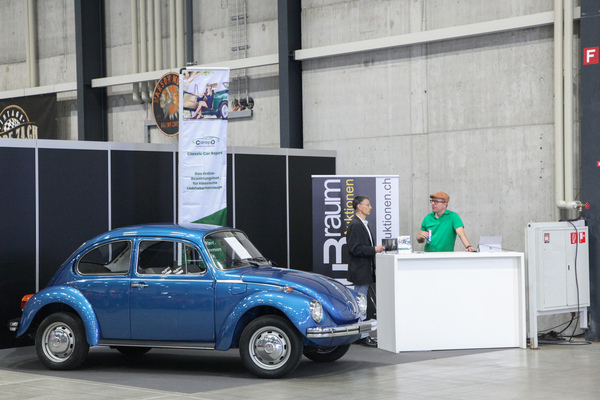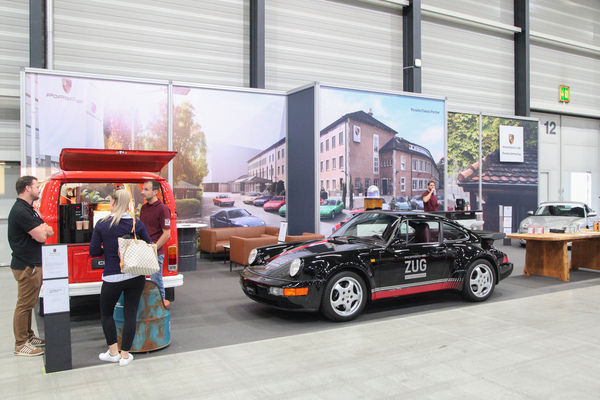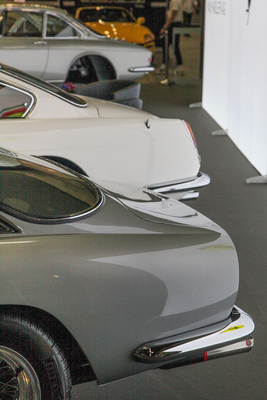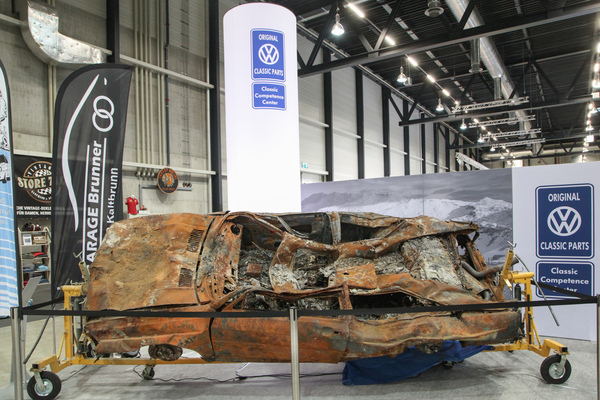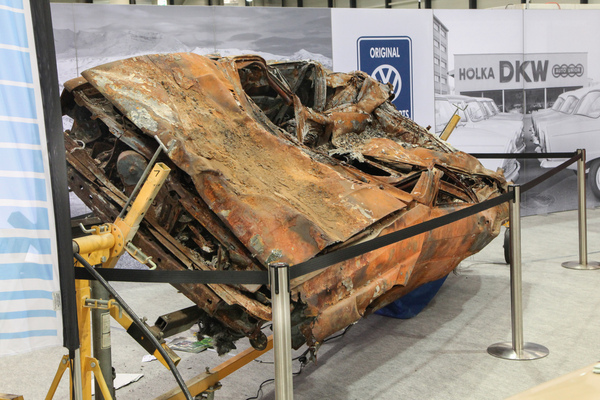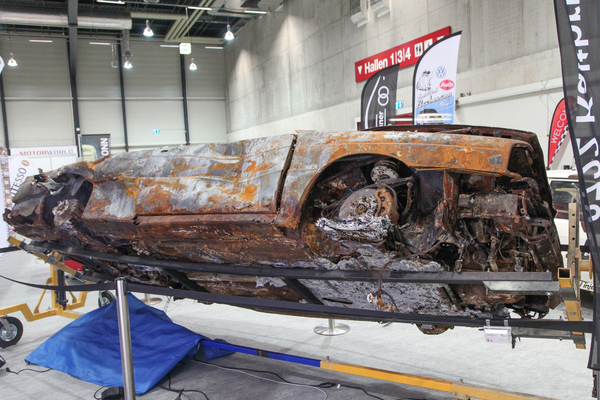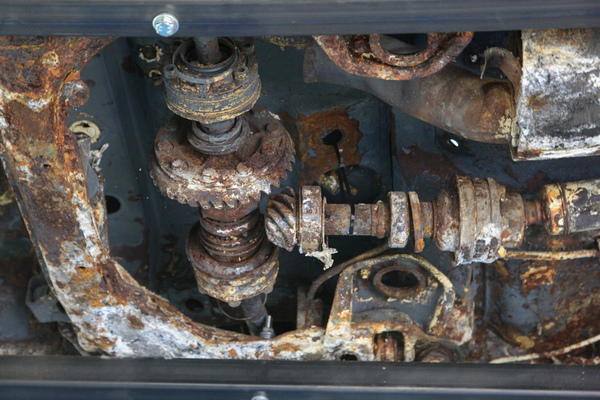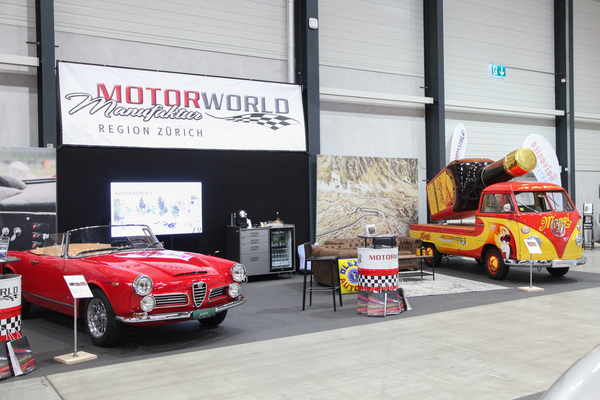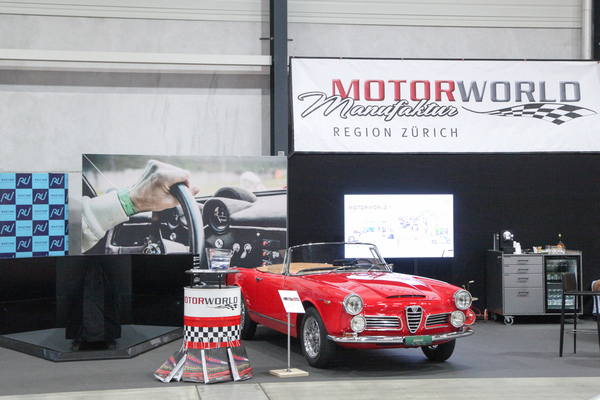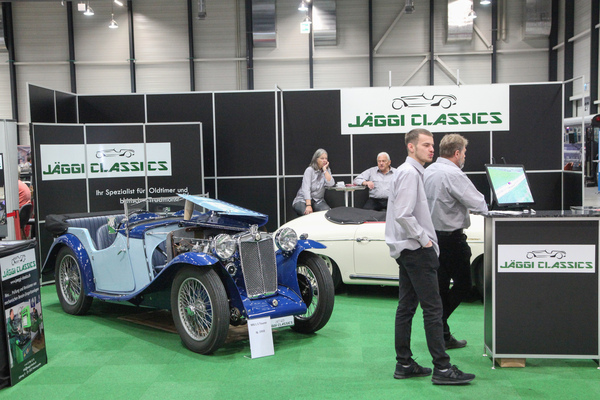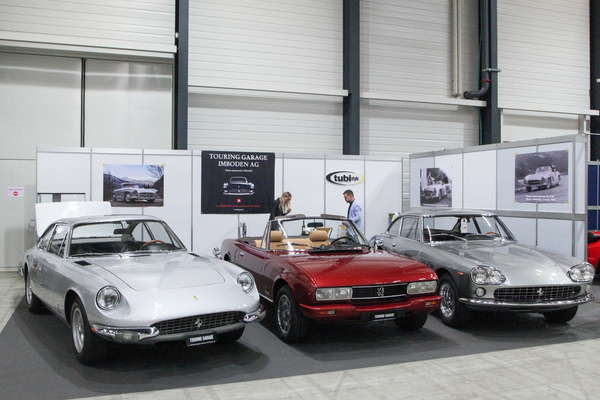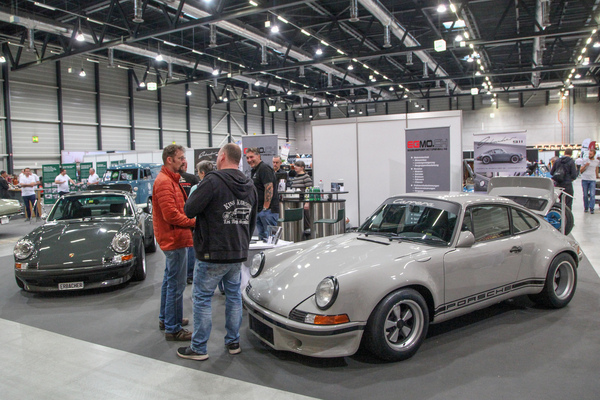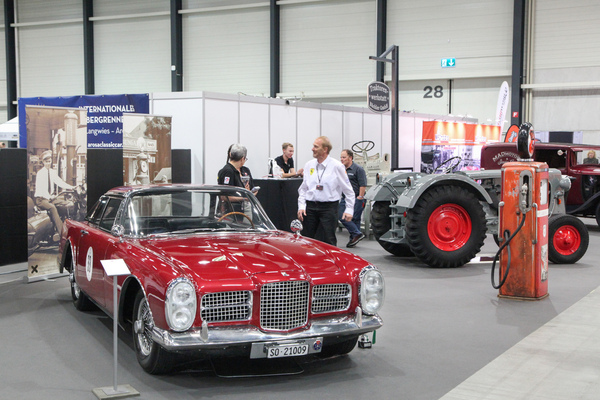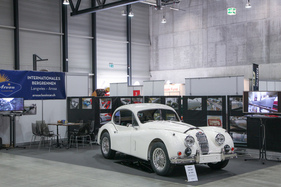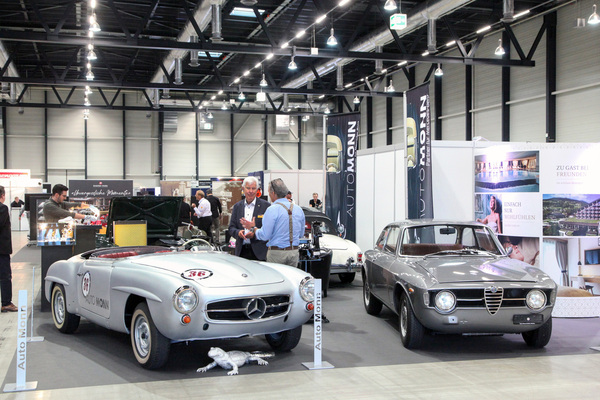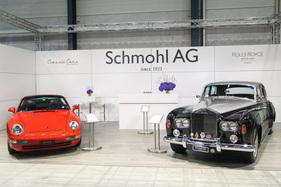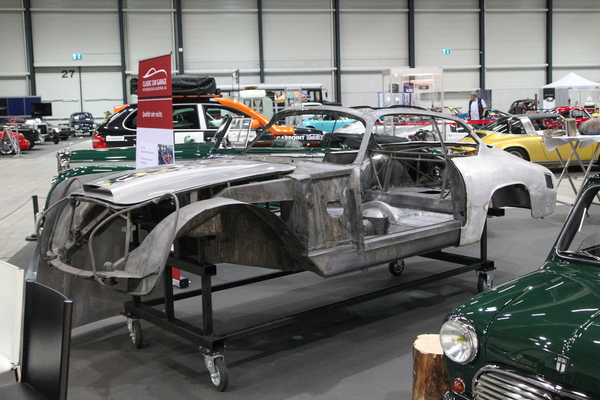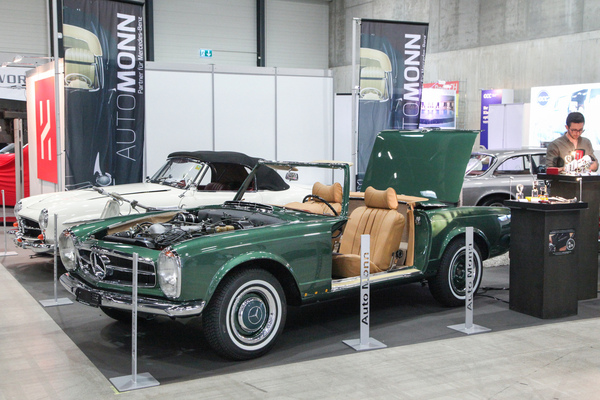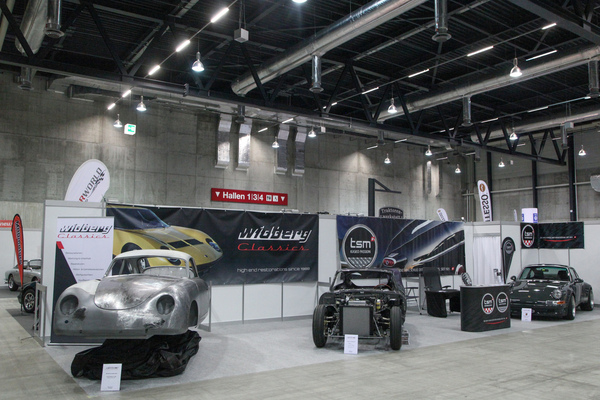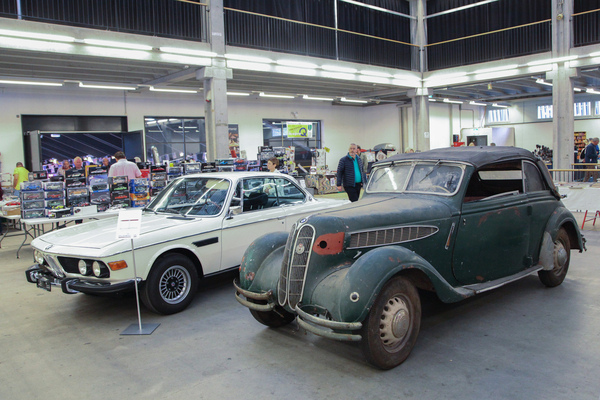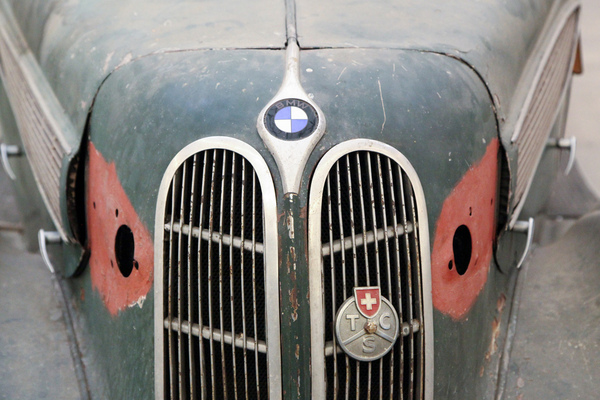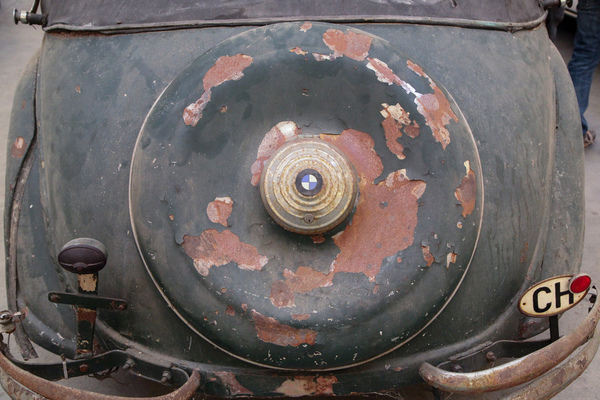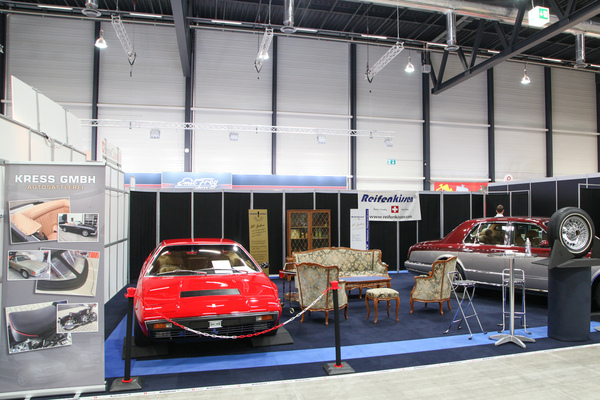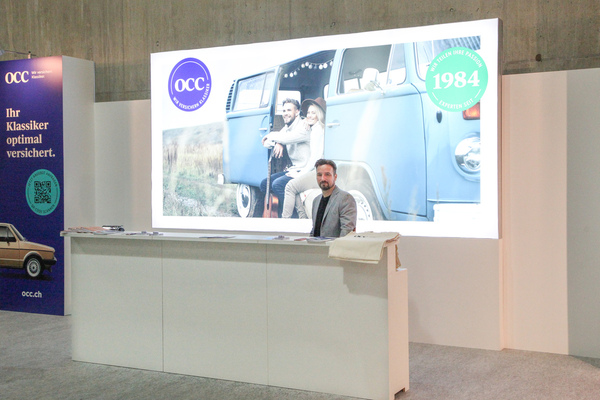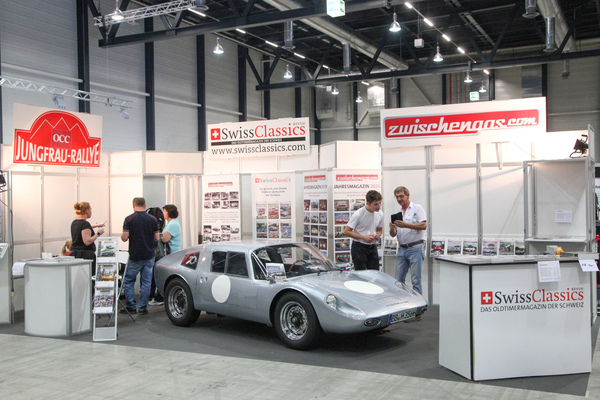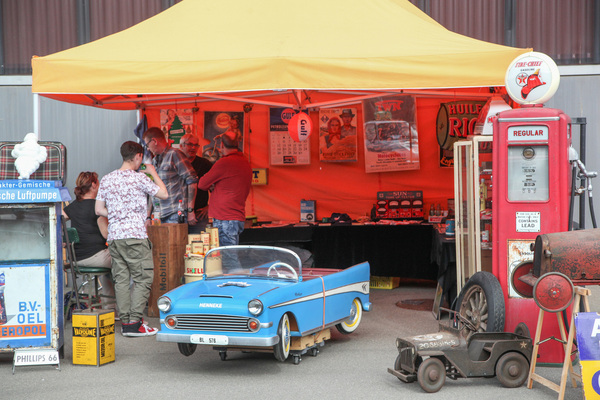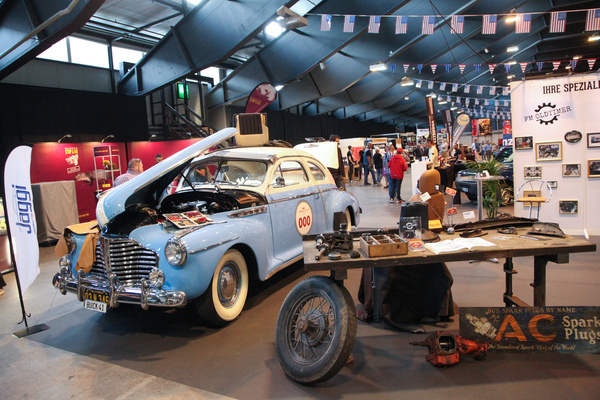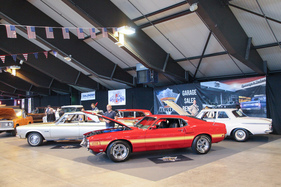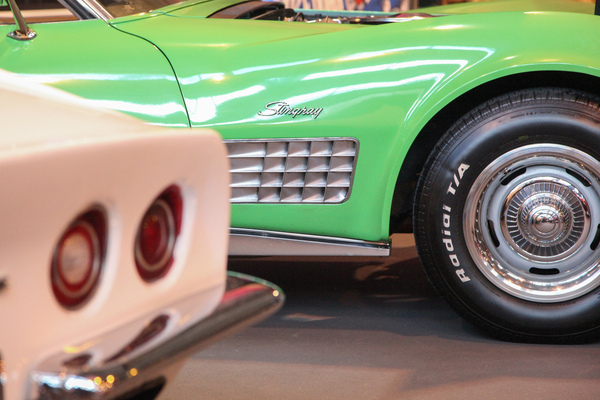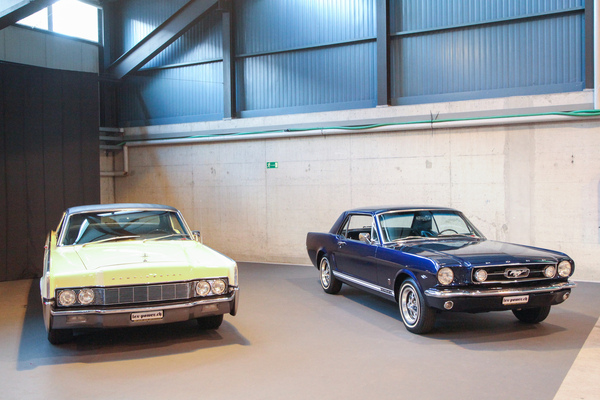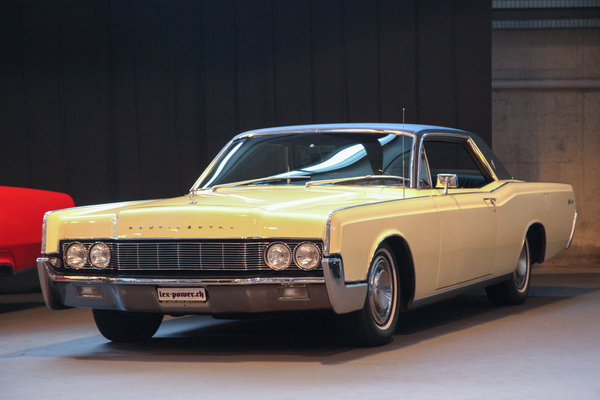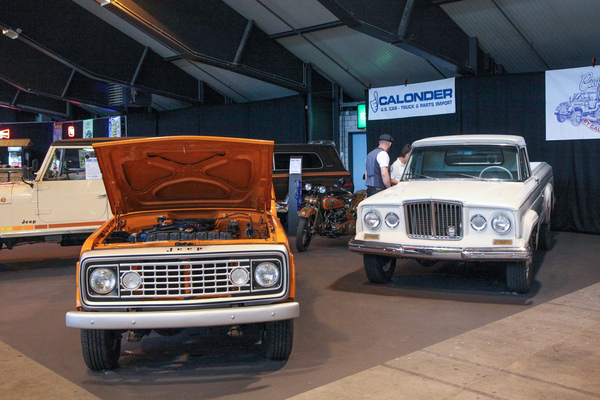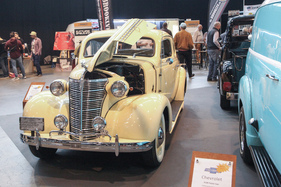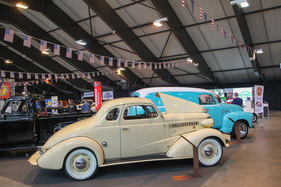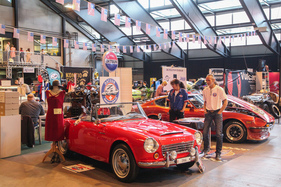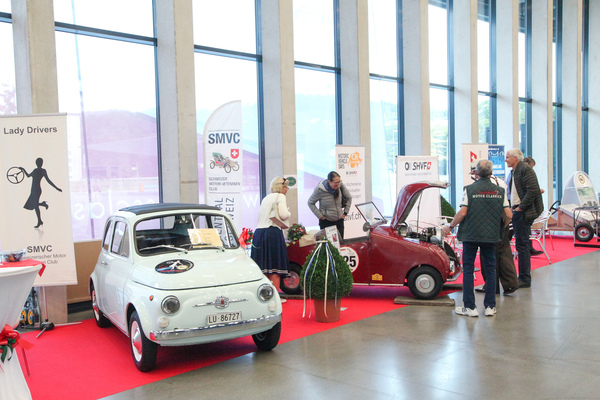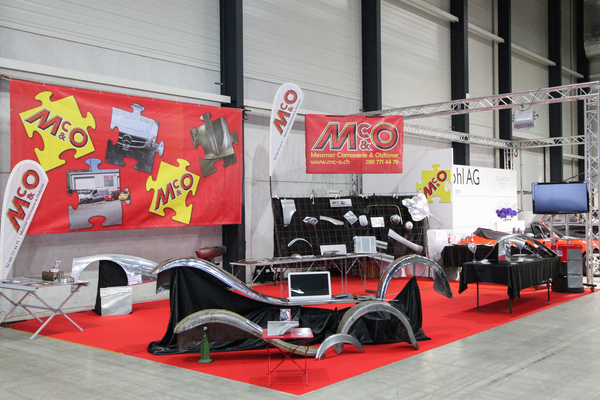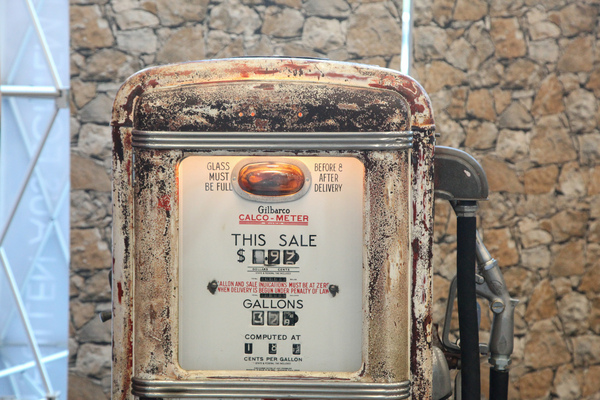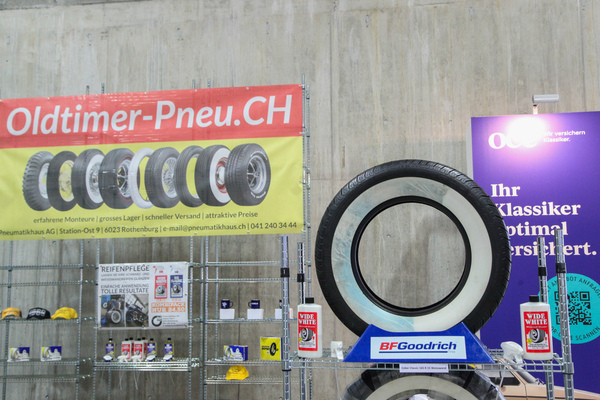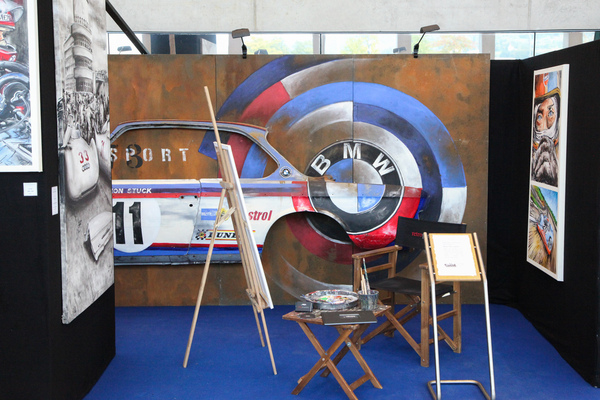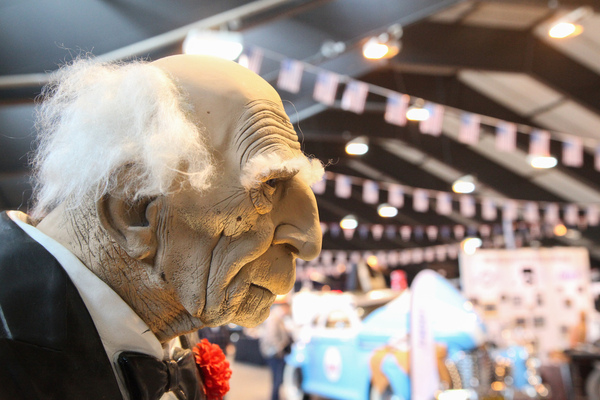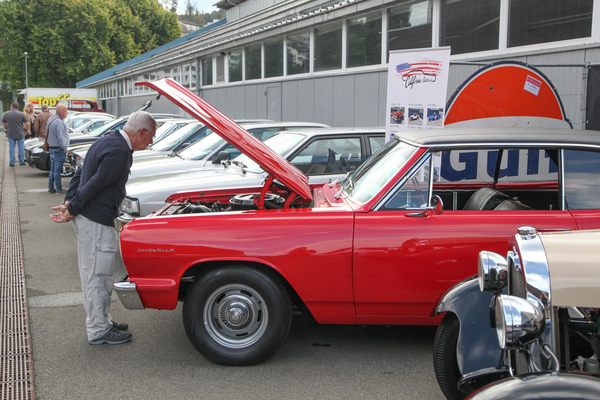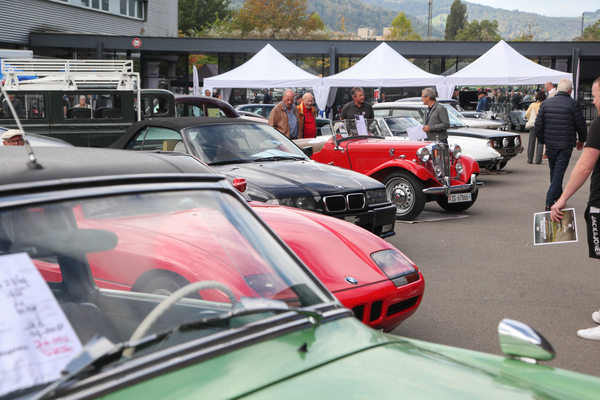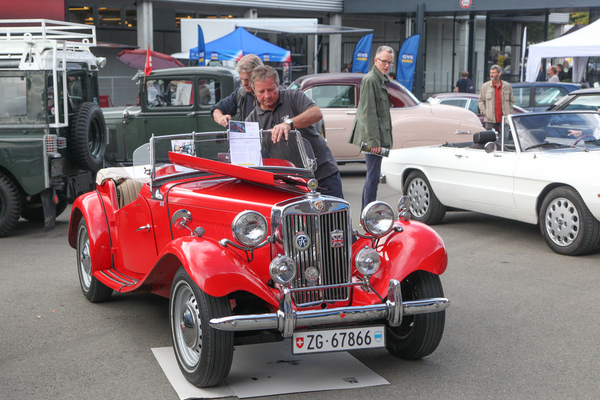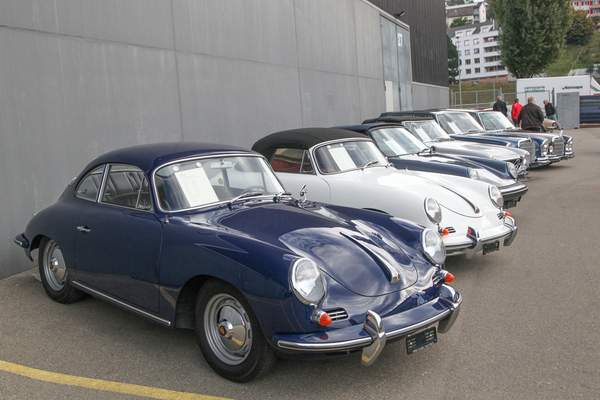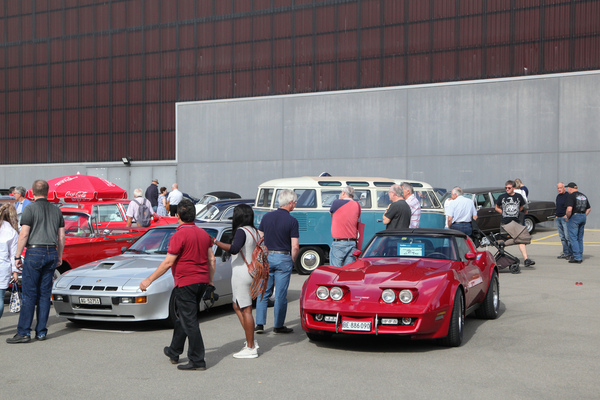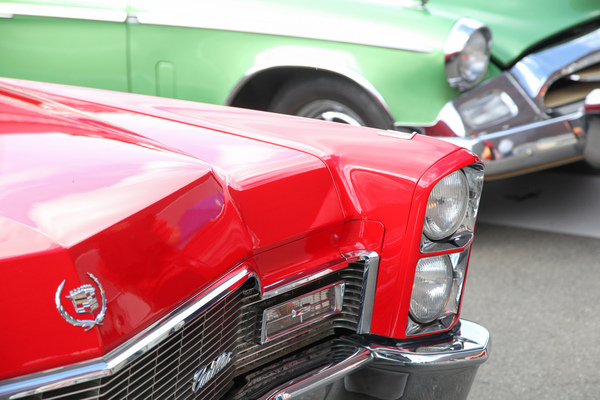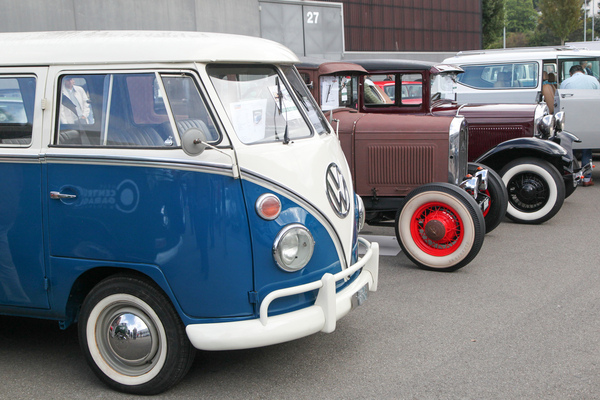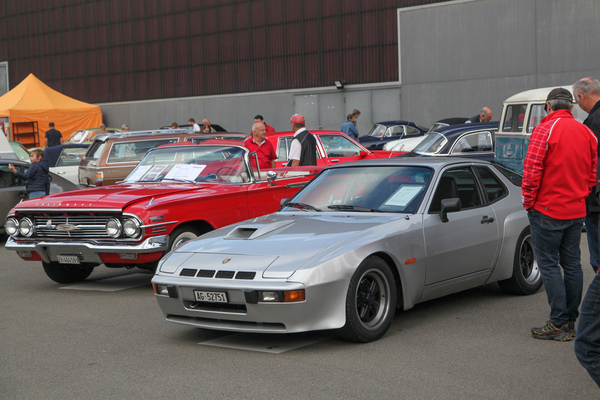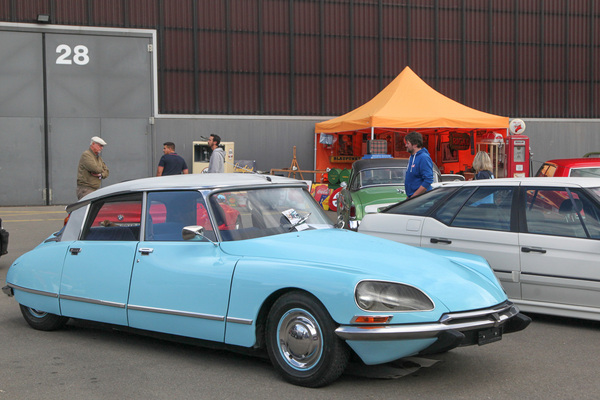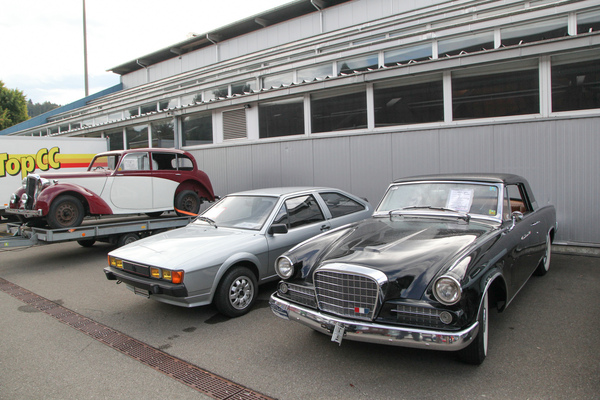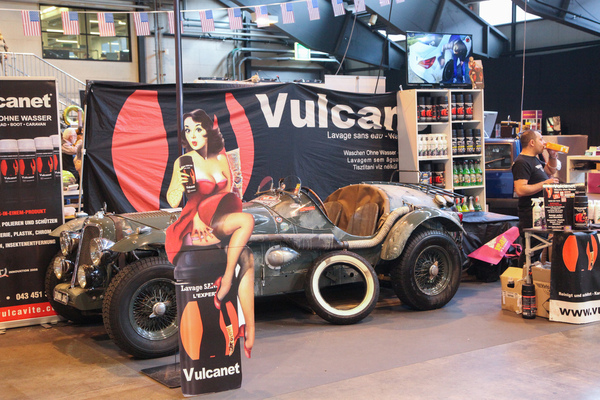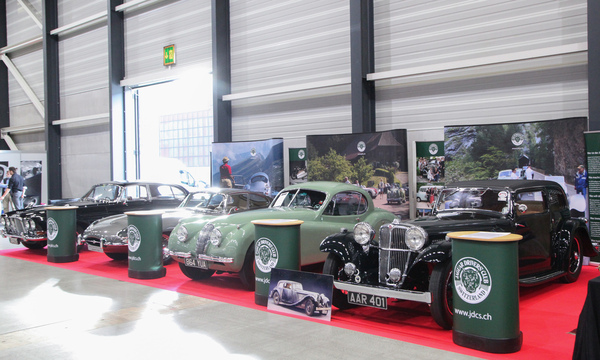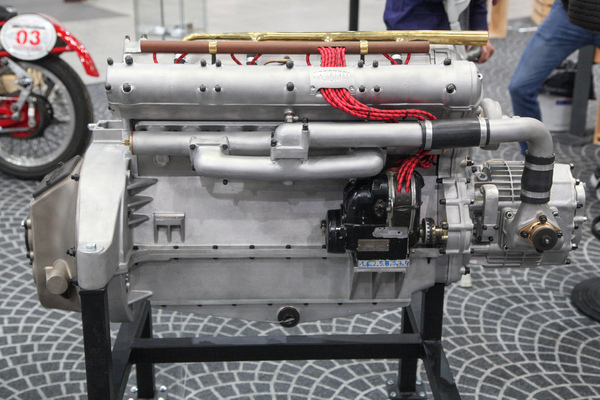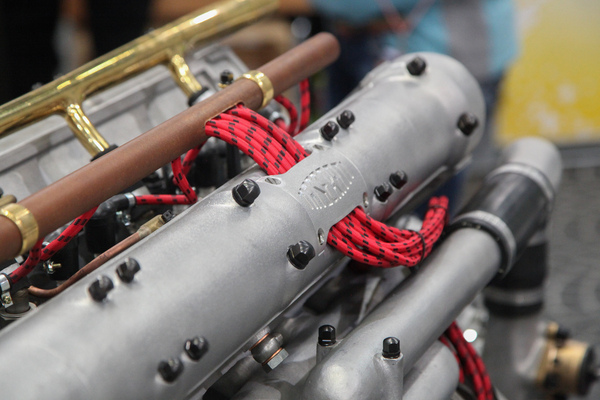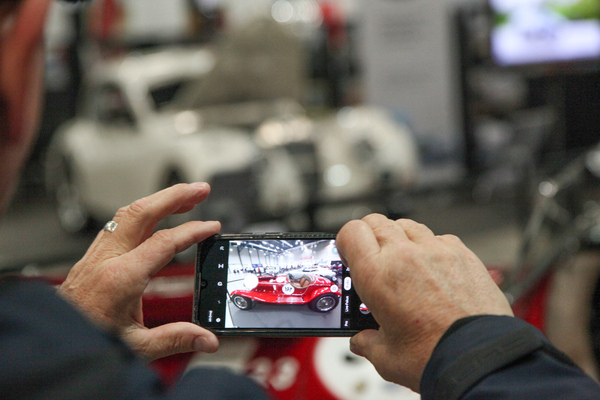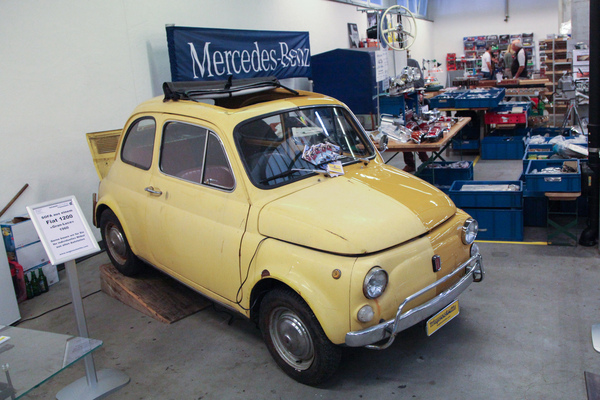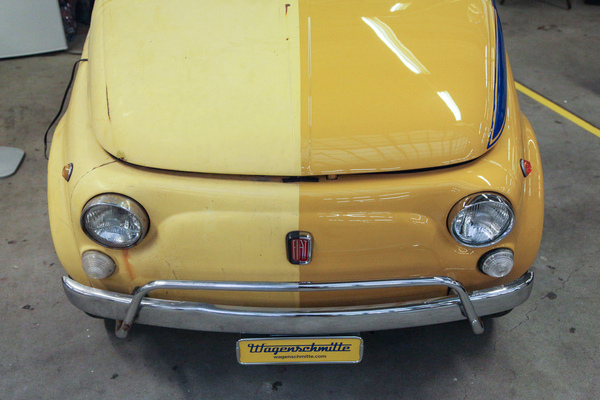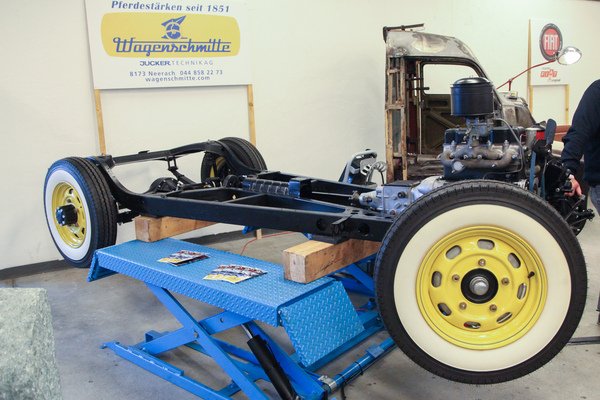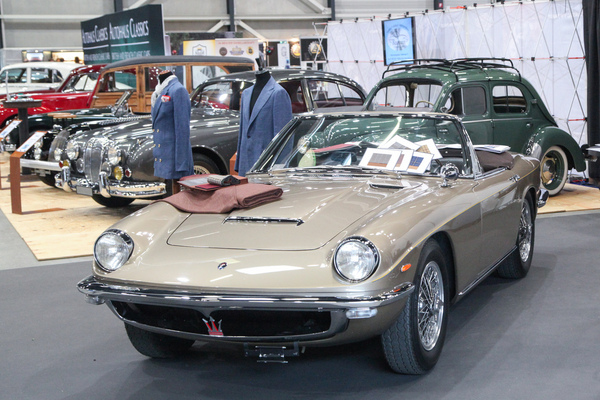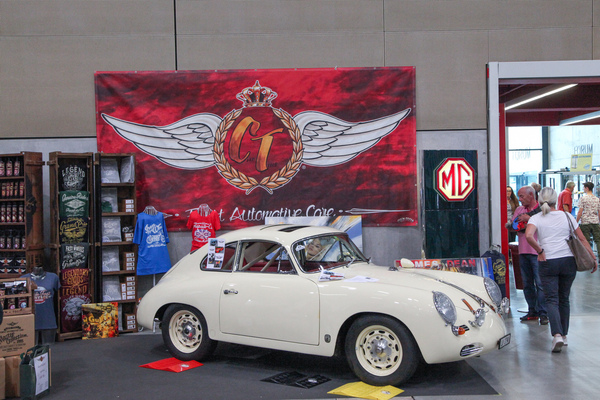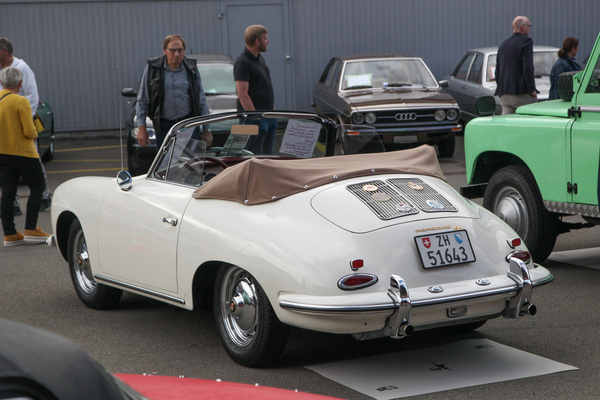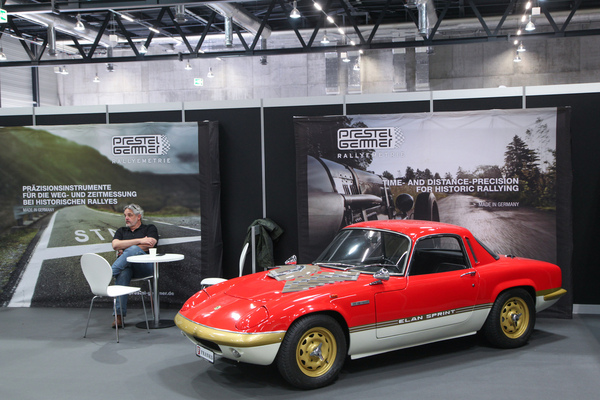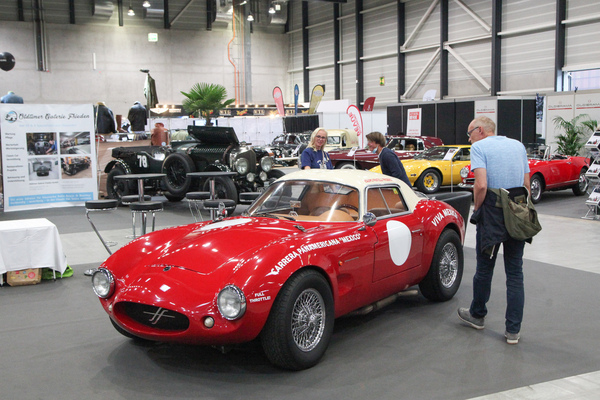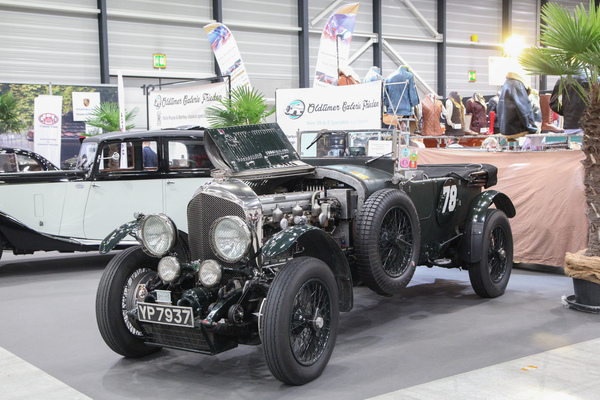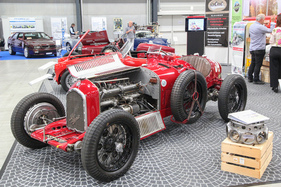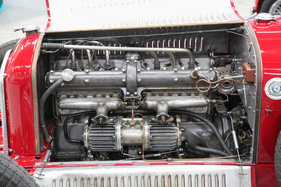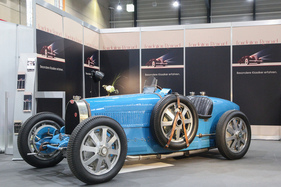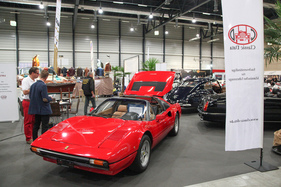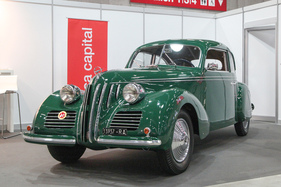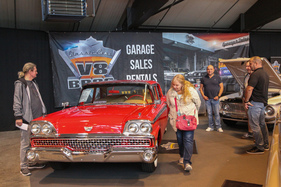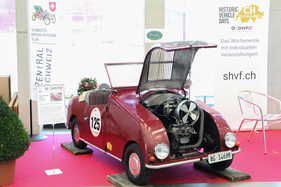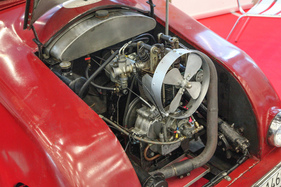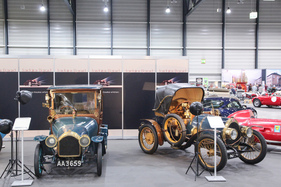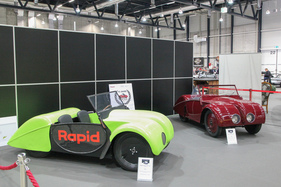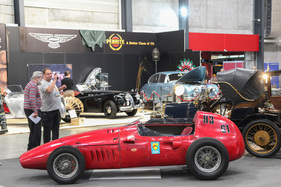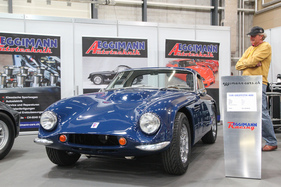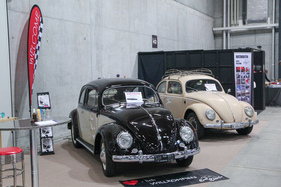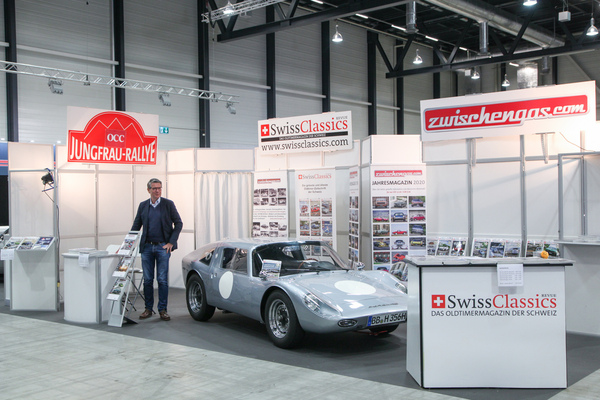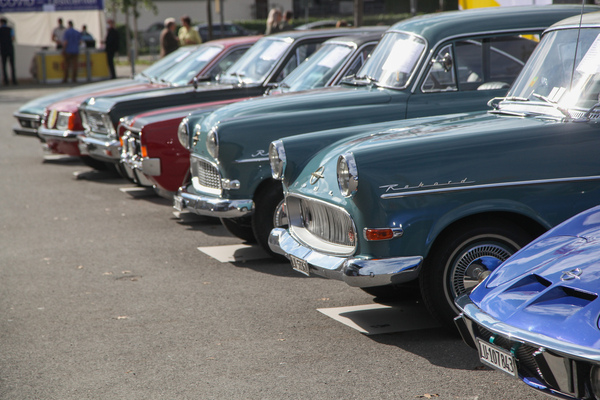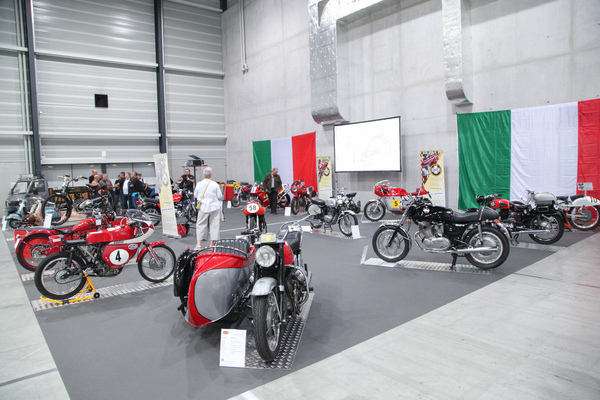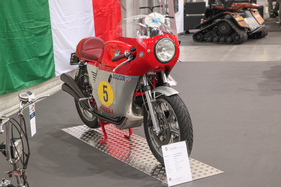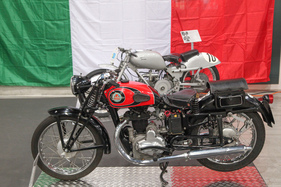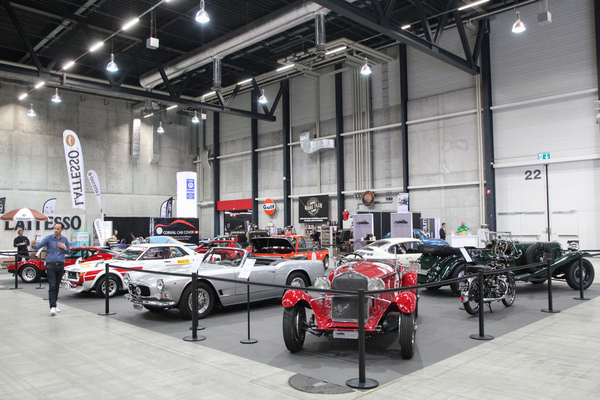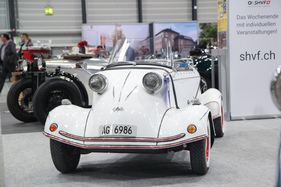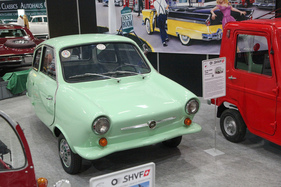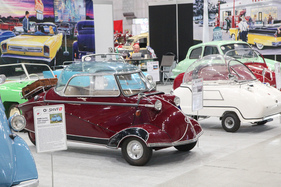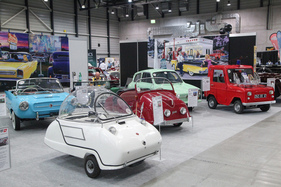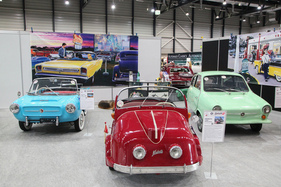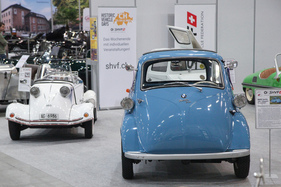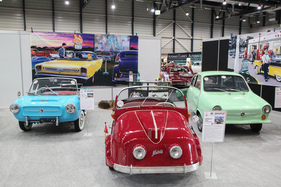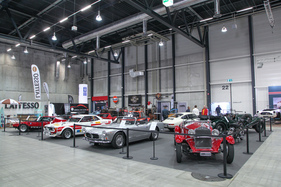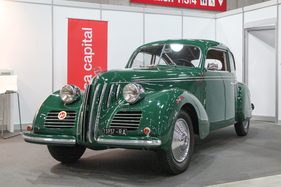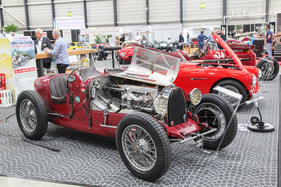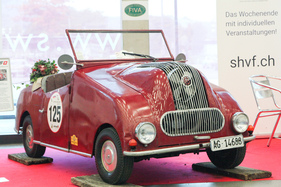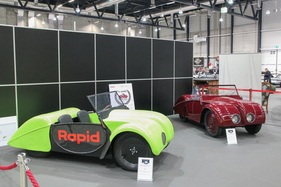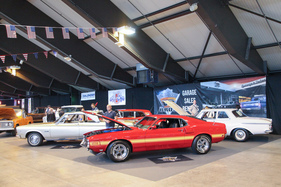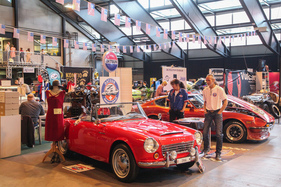After two postponements, the popular Swiss classic car fair Swiss Classic World Lucerne was finally able to open its doors again from October 1 to 3, 2021. The additional visitor day on Friday was a new addition, otherwise organizer Bernd Link relied on the tried and tested. The 3G certificate requirement had to be accepted, but visitors were allowed to stroll between the stands and talk without a mask.
However, this may have annoyed some potentially interested parties, which they probably acknowledged by not attending. Overall, however, the number of visitors was certainly comparable to the last event, but the flow was better distributed thanks to the additional day of the trade fair. In fact, the number of visitors was even slightly higher according to the organizers.
Colorful microcar special show of the SHVF
The fact that small cars like to be more colorful was once again demonstrated by the beautifully painted microcars at the SHVF special show.
Among the almost two handfuls of microcars, there were of course the classic BMW Isetta and Messerschmitt Kabinenroller, but also rarities that are rarely seen elsewhere. The speedy FMR Tg500 "Tiger" was represented as well as the Peel Trident (as a replica), a Meadows Frisky, a Spatz or an Alta A200, which was based on the Fuldamobil S-7 in Greece.
The informative descriptions of the individual vehicles allowed visitors to immerse themselves in the world of microcars.

The three NSU-Fiat Weinsberg 500s on display at the Museum of Transport would have been a good fit for this special exhibition.
They were built in Germany between 1959 and 1963, 4668 saloons and 1560 coupés were produced, around 40 of which are said to still exist today, three of which were beautifully lined up in various two-tone paint finishes in Lucerne.
Dealers with a diverse range
The dealers represented at the event naturally provided a wide-ranging portfolio of rare and interesting classics.
Of course, vehicles from the German brands Porsche and Mercedes-Benz were very present, but classics from Ferrari, Alfa Romeo, Jaguar and Bentley were also well represented.
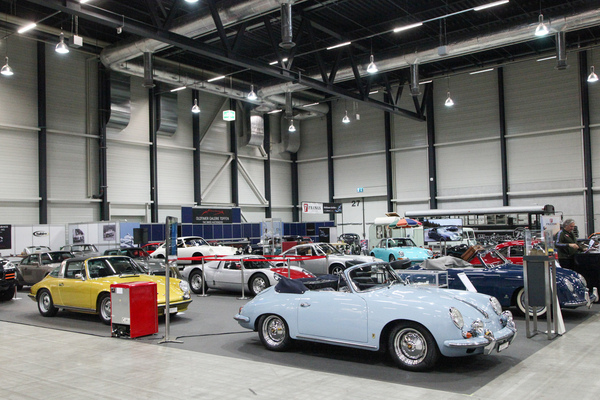
And in between, there were always cars from almost forgotten brands on offer, such as a Lea Francis, a DeLorean or a Rover.

Overall, the manufacturing countries of Germany, Great Britain, the USA and Italy were certainly the most strongly represented. Some enthusiasts would certainly have liked to see a few more exhibits from French manufacturers.

The price level was typically Swiss upmarket, in keeping with the overall good quality level. In a country where discretion is a cultural asset, the prices of many cars naturally had to be asked in conversation. But that's just part of the fun.
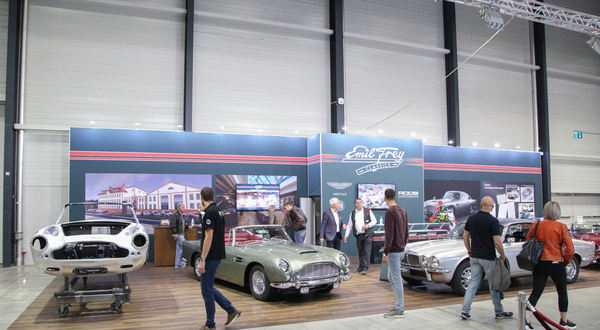
Lutziger Classic Cars, Emil Frey Classics, Niki Hasler, Kestenholz, Franks Originale, Oldierama, Swiss Classic Car and Auto Eberhart, among others, had large stands.

Many other dealers and suppliers of vehicles were also represented, not least the Oldtimer Galerie Toffen, which drew attention to the upcoming fall auction on October 16, 2021 and the Gstaad auction on December 29, 2021. Incidentally, another Toffen auction is planned for the Swiss Classic World in 2022.
Broad presentation of services
However, many cars were not to be found on the dealer stands, but with service providers, who were of course also happy to bring a high-profile vehicle to Lucerne to draw attention to their added value.
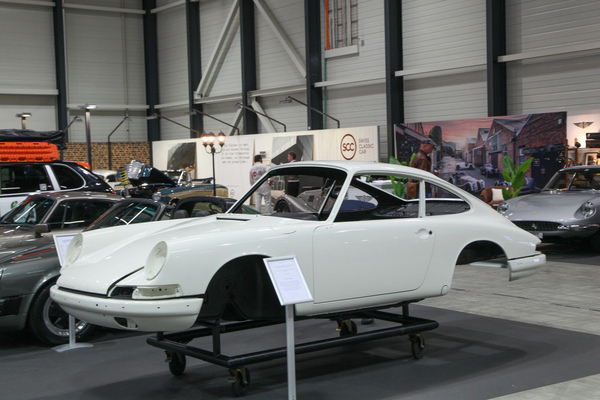
There were cars to see in unrestored and semi-restored condition, such as a rare Porsche 901 at Porsche Classic Partner Zurich.
Some visitors may also have noticed the elegant Fiat 1500 Touring Superleggera Coupé, which looked very appetizing in green.
Restorers, insurers, upholsterers, maintenance service providers, accessory suppliers and other types of companies were all very eager to talk and took advantage of the opportunity to make contact with new and old customers.

Not everyone went so far as to show a completely burnt-out car wreck. At Autowelt Bachmann, however, an Audi quattro that had been almost completely destroyed by flames was a source of amazement for visitors time and time again, especially as it provided insights into the construction that are usually made impossible by covers.
Pre-war classics from Alfa Romeo and Bugatti
The pre-war sports cars from Bugatti and Alfa Romeo on display at various stands were certainly among the rarest and most attractive automobiles at the trade fair.
They were built at a time when attractive looks were also required under the hood and drivers had to know what they were doing because no-one was doing the critical work for them.
Whether Alfa Romeo P3, Alfa Romeo 6C 1750 GS Zagato, Bugatti Type 35 or 51, they were all there and many a visitor certainly wished they would roar off. But apart from the V8 of a Cobra, the engines remained quiet ...
Cars from Switzerland
Switzerland is certainly not one of the major car manufacturing countries. But time and again, vehicles were produced or assembled in this Alpine democracy after the Second World War. Some were even designed in this country.
On the way through the halls, for example, you could admire a Geissmann from 1943 at the SMVC/SHVF stand. Hans Geissmann built this miniature car with a JAP 350 cc engine to drive to work.
Incidentally, the automobile from Rapid, a company better known for its agricultural machinery, celebrated its 75th anniversary. Designed by Joseph Ganz in the post-war period, this miniature vehicle was aerodynamically optimized and offered space for two people.

The Swiss Car Register showed a selection of automobiles in which Swiss craftsmen played a significant role in production, whether by assembling prefabricated components or by mounting the body on a supplied chassis.
Few people are likely to remember that the Opel Manta was also once assembled in Switzerland, but it is better known that Hermann Graber created beautiful bodies for Alvis chassis.

Assembly was not only carried out in Biel by General Motors, but also in Schinznach by AMAG. Between 1957 and 1960, 1098 VW Karmann-Ghia were built, and the Plymouth Barracuda was also assembled 216 times by Swiss hands between 1967 and 1969. The people in Schinznach also produced Chrysler, DeSoto and Dodge vehicles.
The world of the Americans
Which brings us straight to the Americans, who, as in previous years, were to be found at the Lucerne show in Hall 4, below Hall 3, which is primarily available to parts and accessories dealers.
If you liked Chevrolet Corvettes, hot rods, elegant Continentals or youthful Ford Mustangs, you'll find plenty to look at in Hall 4.
There were also events such as the Brugger Schachen Oldtimer GP and the Michaelskreuzrennen, as well as clubs such as the Datsun Club. As always, the atmosphere was musical and relaxed - after all, it was the American way of life.
Electrification, restomods and the future of fuel
Of course, the transportation technology of the future was not missing in Lucerne either. Electrified classic cars, whether under Jaguar, Citroën or VW Beetle shells, are intended to enable emission-free driving of old cars. Enthusiasts around the world are debating whether the soul of the old car will not fall by the wayside.
Experts from Germany and abroad spoke about the possibility of giving classic and vintage cars a new lease of life with synthetic fuels at the congress on Friday.
And as a middle ground between classic and modern vehicle, so-called restomods were also presented at the Swiss Classic World, i.e. cars that look like they used to, but have more modern (and often sportier) technology under the bodywork.

Even new cars were not missing in Lucerne, but at least they looked nostalgic, something that can certainly be said of the instant classic Morgan.
Diversity on the vehicle market outside
As in previous years, the "private" vehicle market was located between Halls 2 and 3. Classic car owners willing to sell were able to put their cars on display for one, two or three days and negotiate with interested buyers. The range of cars was impressive.

There were super classics such as the Fiat Dino as a coupé or the VW Bus T1, but also almost forgotten compact sports cars such as the Talbot Sunbeam Lotus.

Americans were on offer as well as French cars, and next to a Studebaker from the 1950s was a VW Scirocco from the more recent past.

Audi after Audi lined up on one side, Porsche 356s and Mercedes classics from the sixties lined up on the other.
The haggling was intense and many a car finally found a new owner.
Fine motorcycles
Although four-wheeled vehicles dominated the Swiss Classic World as usual, motorcycles were also on display.

These came from dealers, where exotic models from Ducati, Vincent and MV Agusta were waiting for buyers, as well as from the "Friends of Old Motorcycles", an association of two-wheeler enthusiasts, who displayed some rare motorcycles in a special show dedicated to Italian classics.
Agricultural machinery from the past
Finally, a little away from the trade fair, friends of tractors and agricultural machinery had set up shop.

They not only showed tractor technology from past decades, but also examples of how engine technology was used in the past to make life easier, even away from driving. Impressive!

